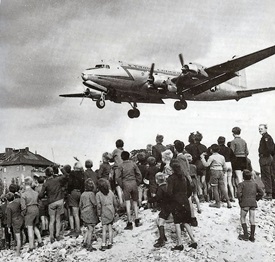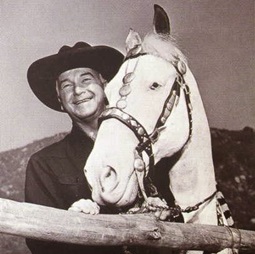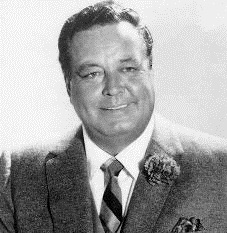On June 24…
“I learned early on that you never answer the question that is asked of you. Answer the question that you wish had been asked of you. And quite frankly, I follow that rule. It’s a very good rule.”
~Robert McNamara
U.S. Secretary of State 1961-1968

1812 – Napoleon’s Grande Armee, with over 600,000 soldiers and staff (the largest European military force ever assembled to that date), crossed the Neman River beginning the invasion of Russia.
During the opening three months of the invasion, the Russian army was in perpetual retreat. Refusing to engage Napoleon’s superior army in a full-scale confrontation, the Russians under General Mikhail Kutuzov burned everything behind them as they retreated deeper and deeper into Russia.
On September 7, the French finally caught up with the Russian army which had dug itself in on hillsides near a small town called Borodino, seventy miles west of Moscow. The battle that followed was the bloodiest single-day action of the Napoleonic Wars, with 72,000 casualties.
One week later, Napoleon arrived in Moscow intending to find supplies but instead found almost the entire population evacuated. The next morning, fires set by Russian patriots broke out across the city and the Grande Armee’s winter quarters were destroyed.
After waiting a month for a surrender that never came, Napoleon, faced with the onset of the Russian winter, was forced to order his starving army out of Moscow. Lack of food and hypothermia from the bitter cold and persistent attacks upon isolated troops from Russian peasants and Cossacks cost more lives.
By the time the remnants of Napoleon’s main army crossed the Berezina River in late November, only 27,000 effective soldiers remained.
On December 8, Napoleon left what remained of his army to return to Paris. Six days later, the Grande Armee finally escaped Russia, having suffered a loss of more than 400,000 men during the disastrous invasion.

1908 – Grover Cleveland, the 22nd and 24th President of the United States, died after suffering a heart attack at the age of 71.
In 1893, Cleveland sought the advice of the White House doctor, Dr. O’Reilly, about soreness on the roof of his mouth and a crater-like edge ulcer on the left side of Cleveland’s hard palate. Samples of the tumor were sent anonymously to the Army Medical Museum.
The diagnosis was not a malignant cancer, but instead an epithelioma (an abnormal growth of the epithelium, which is the layer of tissue that covers the surfaces of organs).
To avoid panic, Cleveland decided to keep the surgery which occurred on July 1 a secret. Under the guise of a vacation cruise on a yacht (shown above) owned by a friend, the surgery was conducted through the President’s mouth. The surgeon successfully removed parts of his upper left jaw and hard palate, but the size of the tumor and the extent of the operation left Cleveland’s mouth disfigured.
Cleveland was fitted with a hard rubber dental prosthesis that corrected his speech and restored his appearance. A cover story about the removal of two bad teeth kept the suspicious press placated. The public was not made aware of the surgery until 1917, nine years after Cleveland’s death.

1948 – Start of the Berlin Blockade: The Soviet Union made overland travel between West Germany and West Berlin impossible. They halted all rail and barge traffic in and out of Berlin. At the time, West Berlin had 36 days’ worth of food, and 45 days’ worth of coal. The West answered by introducing a counter-blockade, stopping all rail traffic into East Germany from the British and U.S. zones.
Military forces in the western sectors of Berlin numbered only 8,973 Americans, 7,606 British and 6,100 French. Soviet military forces in the Soviet sector that surrounded Berlin totaled 1.5 million. Since military action wasn’t feasible (or desired), there was only one alternative … an airlift.
On June 25, General Curtis LeMay and General Lucius D. Clay gave the order to launch what would be called Operation Vittles. The next day 32 C-47s lifted off for Berlin hauling 80 tons of cargo, including milk, flour, medicine, and coal. At that time, the airlift was expected to last three weeks.
By the end of August, after two months, the Airlift was succeeding; daily operations flew more than 1,500 flights a day and delivered more than 4,500 tons of cargo, enough to keep West Berlin supplied. From January 1949 forward, 225 C-54s (40% of USAF and USN Skymasters were devoted to the lift.
Supplies improved to 5,000 tons a day. And on and on it went.
On April 15, 1949, the Russian news agency TASS reported a willingness by the Soviets to lift the blockade. The next day, the four powers began serious negotiations, and a settlement was reached. The Soviet blockade of Berlin was lifted at one minute after midnight on May 12, 1949.
In total, the U.S. delivered 1.8 million tons and the RAF 550,000 tons on a combined 278,228 flights to Berlin. The C-47s and C-54s together flew over 92 million miles in the process, almost the distance from Earth to the Sun. At the height of the Airlift, one plane reached West Berlin every thirty seconds.

1949 – Hopalong Cassidy, the first television western, debuted on NBC.
The character of Cassidy was created in 1904 by author Clarence E. Mulford. Initially, Mulford portrayed the character as rude, dangerous, and rough-talking. He had a wooden leg which caused him to walk with a little “hop”, hence the nickname.
Beginning in 1935, the character – as played by movie actor William Boyd – was transformed into a clean-cut, sarsaparilla-drinking hero with his trusty horse, Topper. Sixty-six popular films appeared.
When “B” westerns had started to phase out, Boyd thought Hopalong might have a future in television. He was right.
The series and character were so popular that Hopalong Cassidy was featured on the cover of national magazines such as Look, Life, and Time. The character was featured on the first lunchbox to bear an image, causing sales of Aladdin Industries lunch boxes to jump from 50,000 units to 600,000 units per year.
In stores, more than 100 companies in 1950 manufactured $70 million of Hopalong Cassidy products, including children’s dinnerware, pillows, roller skates, soap, and wristwatches.

1966 – The United States Senate voted 76-0 for the passage of what would become the National Traffic and Motor Vehicle Safety Act. Signed into law by President Lyndon B. Johnson in September, the act created the nation’s first mandatory federal safety standards for motor vehicles.

1970 – An amendment (to the Foreign Military Sales Act) calling for the repeal the Tonkin Gulf Resolution was offered by Senator Robert Dole (R-Kansas) and approved by the Senate, 81 to 10.
Background: In August 1964, after North Vietnamese torpedo boats “allegedly” attacked a U.S. destroyer (in what became known as the Tonkin Gulf incident), President Lyndon Johnson had asked Congress for a resolution authorizing the president “to take all necessary measures” to defend Southeast Asia.
On August 7, Congress passed Public Law 88-408, which became known as the Tonkin Gulf Resolution, giving the president the power to take whatever actions he deemed necessary, including “the use of armed force.”
Johnson signed it into law three days later. It became the legal basis for every presidential action taken by the Johnson administration during its conduct of the war.
The Real Story: On August 2, 1964, The USS Maddox, while performing a signals intelligence patrol, claimed they were pursued by three North Vietnamese Navy torpedo boats of the 135th Torpedo Squadron. The Maddox fired three warning shots and the North Vietnamese boats then attacked with torpedoes and machine gun fire.
The National Security Agency claimed that a Second Gulf of Tonkin incident occurred on August 4, 1964. The destroyers Maddox and Turner Joy both reported automatic-weapons fire; more than 20 torpedo attacks; sightings of torpedo wakes, enemy cockpit lights, searchlight illumination and numerous radar and surface contacts.
There was just one problem. The unidentified vessels were actually “Tonkin ghosts” (false radar images) and not actual North Vietnamese torpedo boats. A high priority report was dispatched to Pacific Fleet Commander-in-Chief Admiral U. S. Grant Sharp:
“Review of action makes many reported contacts and torpedoes fired appear doubtful. Freak weather effects on radar and overeager sonarmen may have accounted for many reports. No actual visual sightings by MADDOX. Suggest complete evaluation before any further action taken.”
On August 6, Secretary of Defense Robert S.McNamara eluded the questioning of Senator Wayne Morse when he asked specifically whether the U.S. naval operations may have provoked the North Vietnamese response.
McNamara instead declared that “our Navy played absolutely no part in, was not associated with, was not aware of, any South Vietnamese actions, if there were any.”
Johnson’s requested resolution passed the next day.
In 2003, McNamara admitted that the August 2 attack happened with no Defense Department response, but the August 4 Gulf of Tonkin attack never happened.
Got that? The August 4 Attack Never Happened.
But based on the “Big Lie,” Congress gave Johnson a “blank check” which he gladly and consistently cashed. It provided the quasi-legal cover for a criminal, open-ended war in Vietnam that claimed 56,000 American lives, and left a legacy of destruction that remains to this day.
It didn’t stop with Johnson.
In April 1970, President Richard Nixon ordered the bombing of Cambodia secretively without Congressional knowledge even though he had promised to gradually withdraw troops.
The Senate Foreign Relations Committee, in a review of the illegal Cambodian invasion, said, “By its action of April 1970 in initiating hostilities within the territory of Cambodia without the consent or even the prior knowledge of Congress or any of its committees, the Executive Branch has shown disregard” for the constitutional war making powers of Congress.”
Mounting public opinion against the war eventually led to Senator Dole’s amendment, which became part of the Foreign Military Sales Act, signed into law by President Nixon in January 1971.

1987 – Entertainer Jackie Gleason died of colon cancer at the age of 71.
While he is best known for The Honeymooners and The Jackie Gleason Show on television, he had a notable film career, as well.
Gleason was nominated for a Best Supporting Actor Academy Award for his portrayal of pool shark Minnesota Fats in The Hustler and drew praise for his portrayal of a beleaguered boxing manager in the movie version of Rod Serling’s Requiem For A Heavyweight. Gleason played a world-weary army sergeant in Soldier In The Rain (in which he received top billing over Steve McQueen).
And of course, he played the cantankerous and cursing Texas sheriff Buford T. Justice in the Smokey and The Bandit trilogy of films. Although the films brought him back into national attention, Gleason was not particularly thrilled to be part of them, especially the finale of the series which he said was “embarrassing and repugnant.”

1997 – U.S. Air Force officials released a 231-page report dismissing long-standing claims of an alien spacecraft crash in Roswell, New Mexico almost exactly 50 years earlier.
The town became a magnet for UFO believers due to the strange events of early July 1947, when ranch foreman W.W. Brazel found a strange, shiny material scattered over some of his land.
He turned the material over to the sheriff, who passed it on to authorities at the nearby Air Force base. Officials soon announced they had recovered the wreckage of a “flying disc.” A local newspaper put the story on its front page, launching Roswell into the spotlight of the public’s UFO fascination.
The Air Force soon took back their story, however, saying the debris had been merely a downed weather balloon. UFO theorists argued that officials had in fact retrieved several alien bodies from the crashed spacecraft, which were now stored in the mysterious Area 51 installation in Nevada.
Seeking to dispel these suspicions, the Air Force issued a 1,000-page report in 1994 stating that the crashed object was actually a high-altitude weather balloon launched from a nearby missile test-site as part of a classified experiment aimed at monitoring the atmosphere in order to detect Soviet nuclear tests.
On this date, barely a week before the extravagant 50th anniversary celebration of the incident, the Air Force released yet another report on the controversial subject.
Titled The Roswell Report, Case Closed, the document stated definitively that there was no Pentagon evidence that any kind of life form was found in the Roswell area in connection with the reported UFO sightings, and that the “bodies” recovered were not aliens but dummies used in parachute tests conducted in the region.
Very few people bought that story, either.

2010 – John Isner of the U.S. defeated Nicolas Mahut of France at Wimbledon in the longest-ever professional match: 11 hours, 5 minutes over three days.
Isner won the fifth set 70-68.

2012 – Lonesome George, a male Pinta Island tortoise (and the last known individual of the species) died. Most researchers believe he was in the 100-110 age range at the time of his death.
Over the decades, all attempts at mating Lonesome George had been unsuccessful, due to the lack of females of his own species. In his last years, he was known as the rarest creature in the world. George served as an important symbol for conservation efforts in the Galápagos Islands and throughout the world.
Compiled by Ray Lemire ©2018 RayLemire.com. / Streamingoldies.com. All Rights Reserved.